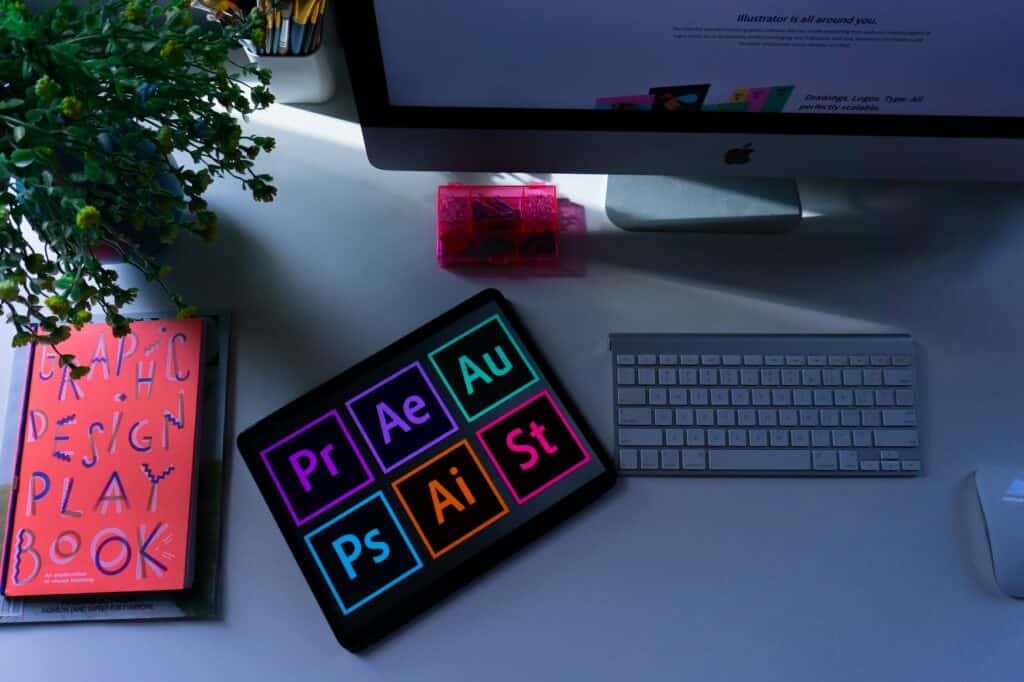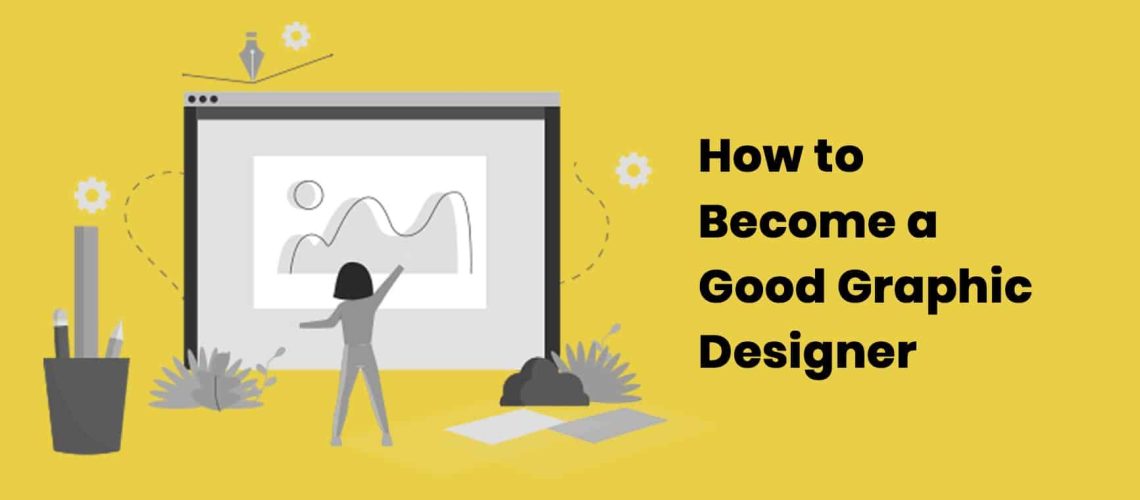Graphic design is a captivating field that combines creativity, technology, and communication to convey visual messages effectively. If you have an eye for aesthetics, a passion for art, and a knack for problem-solving, then becoming a graphic designer might be the perfect career path for you. In this article, we will explore the essential steps and qualities needed to excel as a graphic designer.
Understanding Graphic Design:
Graphic design is the art of using visuals, typography, and layout to communicate ideas and messages. It plays a crucial role in advertising, branding, marketing, and various other industries. A good graphic designer can transform complex concepts into visually appealing designs that leave a lasting impact on the audience.

Skills and Qualities of a Good Graphic Designer:
Creativity:
At the core of every successful graphic designer is creativity. The ability to think outside the box and come up with fresh, innovative ideas is what sets exceptional designers apart.
Technical Skills:
Apart from creativity, a good graphic designer must be proficient in various design software such as Adobe Illustrator, Photoshop, and InDesign, among others.
Communication Skills:
Effective communication is vital for understanding clients’ needs and presenting design concepts. A good graphic designer should be able to articulate ideas clearly and listen attentively to feedback.
Attention to Detail:
Precision and attention to detail are crucial in graphic design. Even the smallest elements can significantly impact the overall design’s quality.
Time Management:
Meeting deadlines is essential in the fast-paced world of graphic design. Good time management skills will ensure projects are delivered on time.
Education and Training:
Formal Education:
While a degree is not mandatory, pursuing formal education in graphic design can provide a solid foundation and enhance job prospects.
Online Courses and Tutorials:
Various online platforms offer graphic design courses and tutorials that allow aspiring designers to learn at their own pace.
Workshops and Seminars:
Attending workshops and seminars can help improve skills and provide valuable networking opportunities within the industry.
Building a Strong Portfolio:
A well-curated portfolio showcases a graphic designer’s best works, illustrating their range of skills and creativity. It serves as a powerful tool when seeking employment or freelance opportunities.
Gaining Experience through Internships and Freelancing:
Internships and freelance projects provide valuable real-world experience and allow designers to build connections within the industry.
Networking and Collaboration:
Networking with fellow designers, clients, and industry professionals can open doors to new opportunities and collaborations.
Staying Updated with Industry Trends:
Graphic design is a dynamic field with ever-changing trends. Staying informed about the latest design styles and technologies is essential for remaining relevant in the industry.
Utilizing Design Tools and Software:
Mastering design tools and software allows designers to efficiently execute their creative visions and bring ideas to life.

Managing Client Expectations and Feedback:
Understanding and managing client expectations are vital for successful project outcomes. Receiving and incorporating feedback is also crucial to delivering satisfactory results.
Dealing with Criticism and Rejection:
Criticism and rejection are inevitable in any creative field. A good graphic designer should take constructive criticism positively and learn from it.
Embracing Continuous Learning and Growth:
The learning journey never truly ends for a graphic designer. Embracing continuous learning and personal growth is vital for staying ahead in the industry.
Balancing Artistic Expression and Client Requirements:
A good graphic designer must find a balance between artistic expression and meeting client requirements and objectives.
Ethics in Graphic Design:
Maintaining ethical standards in design practices, such as respecting copyrights and avoiding plagiarism, is essential.
Conclusion:
Becoming a good graphic designer requires a blend of creativity, technical expertise, and effective communication. By honing your skills, embracing learning, and staying updated with industry trends, you can build a successful career in this dynamic and exciting field.
FAQs:
- Q: Is formal education necessary to become a graphic designer?
A: While not mandatory, formal education can provide a strong foundation for aspiring graphic designers. - Q: Which software is essential for graphic designers?
A: Adobe Illustrator, Photoshop, and InDesign are among the essential software used in graphic design. - Q: How can I build a strong portfolio?
A: Curate your best works, showcase your versatility, and organize your portfolio in a visually appealing manner. - Q: Can I work as a freelance graphic designer without any experience?
A: Gaining experience through internships or small projects can increase your chances of success as a freelance graphic designer. - Q: What are some common ethical considerations in graphic design?
A: Respecting copyrights, avoiding plagiarism, and being transparent with clients are essential ethical practices.








